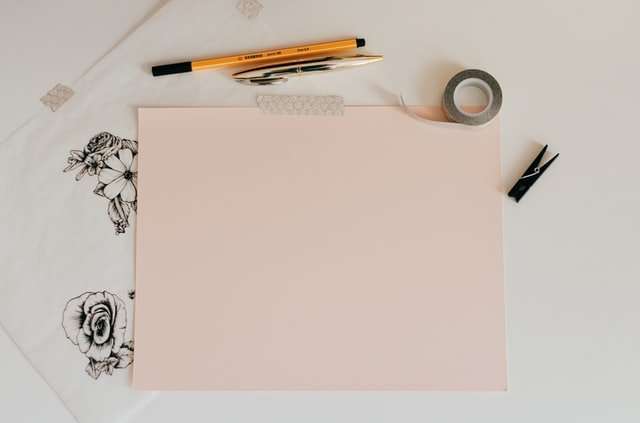From the blog:
Making Things Look Weird Is A Skill. That’s what I want to talk about today.
The basic idea is that weirding up the world makes the characters and their actions stand out more starkly. Their behavior becomes more meaningful because we’re paying attention to everything else, too–we’re seeing it through a lens of strangeness. We’re noticing, for instance, how the guy with a gun in his pocket and a mug on his head is kind of the most normal thing on the page now. Only it’s not a mug, it’s a severed head, and he’s not wearing it as a hat but carrying it like an infant to show us that this is his baby and he loves him, poor thing, both of them are crying because they miss their wife who was brutally murdered in front of them. And also they’ve been separated from the rest of their platoon so they’ve got no backup and they have no idea where they are or who could be out there in this fog filled with monsters.
This is an example that comes from Brian Evenson–you can read another one here . It’s crazy arresting and unnerving because it shows us things we would never see on our own; we had to be shown. And you
Making Things Look Weird Is A Skill. There is a long tradition of authors using surrealism in their work. While the word “surreal” may be unfamiliar, the images it conjures are familiar; the strange juxtapositions, the dream-logic, the bizarre or incongruous elements, the deeply personal yet relatable imagery.
New writers often have trouble employing surrealism because they don’t know how to make things look weird. They write surrealism as if it were simply normal, and as a result it doesn’t look any different from when they’re writing straight. In order to create striking imagery that seems to come from somewhere else, you have to learn how to make things look weird.
As writers, we want to make the reader feel strange. This is a skill, which can be learned and honed. Most of the time, we have to rely on our own intuition when it comes to making things look weird. That’s why I’m writing this blog: to share what I’ve learnt.
I will be giving you insights into the art of making strange things look even more strange. Using examples from weird fiction and other genres, I’ll be talking about how an author creates the expectation of normality and reassures you that everything is okay, before turning things upside down. Then we’ll look at ways of unsettling readers; making them feel uncomfortable in their own skin.
If you’re struggling with your work, or just want to add something new to your repertoire as a writer, this blog will hopefully help you achieve your aims…
“There is a fine line between kitsch and irony.” – Paul Magrs
It may be hard to recognize the difference between the two, but there is one. Kitsch is all about sincerity; if you aren’t sincere then it’s not kitsch. Whereas irony doesn’t care if you’re sincere or not; if you’re insincere then it’s still irony.
Taken to its extreme, kitsch becomes surrealism. For example Salvador Dali’s painting “The Persistence of Memory” is both kitschy (by being strange and weird) and surrealistic (by being intended to make us question normal).
Surrealism isn’t just a matter of being strange, or of questioning normal. It also has an element of making people look weird. Making things look weird is a skill that writers can use to add suspense, in addition to creating mystery or building atmosphere. Writing characters who are intentionally odd can help your writing stand out from the crowd by making it more memorable.
Writing characters who are intentionally weird can help your writing stand out from the crowd by making it more memorable.”
If you’ve ever looked at a surrealist painting and thought, “I could do that,” you are wrong. You cannot do that. Surrealism is not easy to do, nor is it easy to appreciate. There is technique involved in pulling off even the simplest surrealist effects, and there is more technique involved in appreciating them.
Thing making things look weird is a skill. And if you want to get good at making things look surreal, there are two things you need to know: what makes things look weird, and what kind of thing you want to make look weird.
The first part is easier. The second part is less exact — surrealism can be applied in so many different ways — but I can give you a few guidelines. The easiest way to make something look surreal is to come up with an idea for something and then make it as close to that idea as possible while still keeping it recognizable. A man with a lobster head will probably look more surreal than just a picture of a lobster on someone’s face. It’s also easier to have an idea for something if you’re at least kind of familiar with real-world biology or whatever other area your surrealism comes from — but this isn’t strictly necessary.*
If you want to make something look weird, it’s not enough to just be weird. You have to communicate that weirder-ness for anyone to notice.
Here’s an example. If I were to tell you about a movie where a man builds a machine that allows him to climb through the air using magnetic boots, or read minds by touching people’s skulls, or see into the future using a crystal ball, don’t you think you’d have some questions? How does he climb up through the air? Why does touching my skull help him predict the future? How does he see into the future?
You might think I’ve made this up, but all these things happened in one movie: The Wizard of Oz. (If you haven’t seen it, watch it already.) All these details are there. Dorothy uses her ruby slippers to travel to another world; she has a little dog named Toto; she encounters an evil witch who threatens her friends and family; she gets help from Glinda the good witch, and so on. Do you remember them?
Why do these details stick out more than the fact that Dorothy can fly through the air with magnetic boots? Because they’re strange details. And if they’re strange details, then you can use
If you’ve read enough surrealist art, you’ll start to notice an interesting pattern. All the images are beautiful. The artists took great care to make the art look very nice. And yet for some reason, it still looks strange.
The first thing that happens is that there’s a kind of asymmetry to their compositions. The balance of the image isn’t quite right, but you’re not sure which way it’s off. The second thing that happens is that there’s something unexpected in the image. Maybe there’s something familiar out of place, like a cow in a room full of people in business suits. Maybe there’s something weird about the proportions of the people or the animal in the picture, or maybe it’s just a drawing of a cow inside a room full of people in business suits, and no one is looking at it or petting it or milking it.
Quite often they have elements that look like doodles or sketches—lines or shading that doesn’t seem to fit with the rest of the picture. Sometimes you can almost see them putting those doodles into the corner, like they forgot they’d drawn them and they were too lazy to erase them so they just stuck them into an empty corner of the painting where no one would



